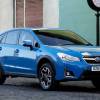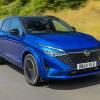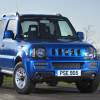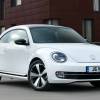
RAC sale – up to 33% off*
• Roadside cover from £5.29 a month†
• We get to most breakdowns in 60 mins or less
• Our patrols fix 4/5 breakdowns on the spot

By Jonathan Crouch
Introduction
Volkswagen's second generation Tiguan widened its market reach in this lengthened 'Allspace' guise to include those wanting a third seating row in their mid-sized SUV. Could a used one be all the car you'll ever really need? Here, we look at the earliest 2017-2021-era versions of this model.
Models
5dr SUV (1.4 TSI, 1.5 TSI, 2.0 TSI, 2.0 TDI)
History
By 2017, increasingly, it was no longer enough for mainstream brands to just offer a single mid-sized SUV. By then, the market was demanding that mainstream makers also provide variants of such models that were lengthened so as to be able to incorporate a third seating row. Volkswagen couldn't ignore this trend - and didn't, bringing us this bigger 'Allspace' Tiguan derivative.
It wasn't hugely larger than the standard version - 215mm longer, with a wheelbase extended by 106mm. Still, that was enough to make quite a difference to the way customers could potentially use this car. And quite a difference to the way that Volkswagen could sell it too. The standard Tiguan wasn't really big enough for the brand to offer in countries like America, but in pumped-up 'Allspace' form, it was a perfect fit as an entry-level SUV for that market, the additional rear inches also freeing up the extra second row room that burly Yankee buyers often need.
This helps explain why Volkswagen did more than just add some extra length to this model - the styling of the front end and the roof was different too. And why this Allspace variant was built on the other side of the Atlantic from its standard stablemate - at the company's factory in Peubla, Mexico, the plant then assembling Beetle and Jetta models. The distance that fully-assembled versions of this car had to come to sell in our market wasn't what accounted for this larger Tiguan's rather higher price point though. That was down to the fact that that for this variant, Volkswagen ignored the lower-spec and lower-powered trim and engine options you could have with the standard body style, seeking to position the Allspace as a stepping stone to its larger more luxurious Touareg SUV.
So, it wasn't a budget-buyer's choice in this segment, but if you're a Volkswagen customer who was already after a plusher Tiguan from the 2017-2021 period, the prospect of extra seats and extra space could well appeal. But will this model also interest families shopping amongst up-market versions of more affordable contenders in this sector from this period - like Nissan's X-Trail and Peugeot's 5008. Or the Skoda Kodiaq and SEAT Tarraco twins, cars that shared much of this Tiguan's engineering? That's a much tougher ask. Let's taker closer look at what this car has to offer to the used buyer. This earlier version is our focus here: it was lightly updated in mid-2022.
What You Get
In Allspace form, this Tiguan ought to be just slightly bigger. Which of course it is, but somehow the changes made in creating this larger model created something more. From the central B-pillar backwards, everything was re-designed to allow for the 215mm of additional length. As part of that, the wheelbase became 106mm longer, stretching between black plastic-trimmed wheel arches housing rims of either 18 or 20-inches in size. The bodywork of this bigger variant follows a different contour from that of the standard model and the rear part of the side window design features a sharper curve upwards where it rises directly behind the C-pillar. The roof was redesigned too, featuring its own unique set of structural lines and framed by standard silver roof rails. More surprisingly, there were also changes at the front, where the radiator grille became higher in comparison to the standard car. Plus the bonnet became more upright at the front, and carries different accent lines from front to rear.
All well and good, but what you'll really want to know is just how much difference the Allspace design changes made in terms of luggage capacity and rear seat room. We'll start with the impact on passenger space - and passenger access: that's aided hugely by the much longer rear doors. Most of the time of course, the folks you're carrying will want to take a pew in the middle row, where they'll enjoy 54mm more kneeroom than they'd get in an ordinary Tiguan. That's assuming the rear bench is set in the correct position. As in the ordinary model, it can slide backwards or forwards over a range of 180mm.
What about the third row seating? Volkswagen suggests that this area is 'ideally suited' to folk of less than five feet two inches in height - children in other words. Should you have really drawn the short straw and be confined to the third row as an adult, then as usual in a mid-sized seven-seat SUV, you'll find that the high floor line necessitated by having to make space for a 4WD system means that your knees will be a little uncomfortably positioned up towards your chest. Still, if those in the middle row can be persuaded to push their bench forward, it'd be bearable here for fully-sized folk on shorter trips.
OK, so we've covered the additional room that this bigger Allspace body style frees up for people. But what about packages? Once the hatch is raised, the room you'll have to play with depends of course on whether the third row chairs are upright. If they are, you'll have 230-litres of carriage space. If you need more room, then folding the third row chairs into the floor is easy, providing the second row seats aren't pushed all the way back. If they're pushed all the way forward, then once you've done that, you'll have 700-litres of space to play with, 85-litres more than you'd get in the similarly-configured boot of an ordinary Tiguan.. If you need to flatten the middle backrest, then you can do it by using neat latches on either sidewall on each side of the cargo bay. That frees up 1,775-litres of space, 120-litres more than an ordinary Tiguan can provide.
Enough on the spacial advantages that this Allspace body style can offer. Let's finish with a focus on an area of this larger Tiguan model that didn't change with this body style - the front seat environment. And remind ourselves just why a seat behind the wheel of this Volkswagen SUV persuades so many potential customers to buy one. Basically, the appeal is that here, you're getting near-premium segment quality at near-volume segment pricing. The extra technology on offer helps with this impression and it's certainly something that your sales person will want to emphasise. You get more of it in the Allspace as all variants come complete with the upgraded 'Discover Navigation' version of the brand's classy 8-inch glass-fronted centre-dash infotainment display. As well as sat nav, this touchscreen effectively deals with all the usual DAB stereo, Bluetooth 'phone and car informational functions.
What You Pay
Please fill in the form here for an exact up-to-date information.
What to Look For
Most Tiguan Allspace owners we surveyed were very happy with their cars, but inevitably, there have been those who have had problems you'll want to look out for. We came across a few issues with the DSG auto gearbox. Another owner reported faulty electric and various faulty sensors, plus problems with the GPS system. Apart from that, check for the usual things - interior child damage, scratched alloys etc. It's unlikely that any Tiguan Allspace models will have been serious used off road but check the underside of 4MOTION variants just in case. And of course insist on a fully stamped-up service history.
Replacement Parts
[based on a 2018 model 2.0 TDI 150PS diesel] An air filter will be priced in the £7 to £20 bracket, an oil filter will sit in the £5 to £8 bracket and a fuel filter will cost in the £9 to £22 bracket, though a pricier brand could cost you up to £28. A water spump will likely cost between £102 and £175. The brake discs we came across sat in the £65 to £140 bracket, with pricier-branded discs costing between £223 and £257. Rear discs are in the £60-£167 bracket. Front brake pads are in the £25 to £68 bracket for a set but for pricier brands, you could pay up to nearly £112. Rear pads are in the £23-£40 bracket. An alternator is around £162, a starter motor is in the £110-£158 bracket; a thermostat is £13-£13; a wiper blade is £13-£26; a headlight is around £168; a tail lamp is around £127.
On the Road
You wouldn't expect the changes made to this lengthened Allspace model to have much effect on drive dynamics - nor did they. If anything, the stretched wheelbase had a positive effect on this model's roadgoing demeanour, the extra weight and longer stance helping the suspension smooth over bumps through higher speed corners. Ride quality is an established strength of the ordinary Tiguan and remains an attribute here, aided immeasurably by the hi-tech MQB platform that sits beneath the bodywork. You'll want to know about engines. The line-up dispenses with the feeblest petrol and diesel units offered in the standard Tiguan range, but is otherwise identical and, as with that ordinary model, is heavily orientated towards diesel power - 2.0-litre diesel power to be specific, Wolfsburg's venerable TDI unit available in three states of tune with 150, 190 and 240PS outputs. There are also two petrol options, a 150PS 1.4-litre unit (later replaced by a 1.5-litre engine with the same output) and a 180PS 2.0-litre powerplant.
Top powerplants come only with DSG auto transmission and 4MOTION 4WD but original buyers who went for the volume 2.0 TDI 150PS diesel variant could add both those two systems in as options. More than half of Allspace buyers go for a 4MOTION model, not only because the AWD system delivers extra off road prowess but also because it'll increase the braked towing capability by nearly half a tonne to 2,400kgs. It's activated by '4MOTION Active Control', a rotary dial below the gearstick that enables you to switch between on and off road modes. Keeping it in the tarmac settings will obviously help running cost efficiency, which in the case of the 2.0 TDI diesel model is rated at 56.5mpg on the combined cycle and 131g/km of CO2 (both NEDC figures).
Overall
As with the ordinary Tiguan model, providing you don't expect this Allspace derivative to be among the cheaper choices in this segment, then there's very little not to like. For less than the cost of, say, a five-seat Audi Q5 or Mercedes GLC, you can get yourself, in this seven-seat Volkswagen, a family SUV with almost equal badge equity but quite a lot more versatility.
Are there other issues aside from price? Well, some rivals are slightly more spacious. Then there's the annoying lack of ISOFIX child seat fastenings in the third seating row. Otherwise though, this is a very complete product indeed. It's beautifully built, efficient to run, easy to live with and practical to own. Other segment alternatives make similar claims but after trying them following a Tiguan Allspace test drive, you might end up feeling you'd be prepared to pay just a touch more for Volkswagen ownership. And we'd understand it if you did.







